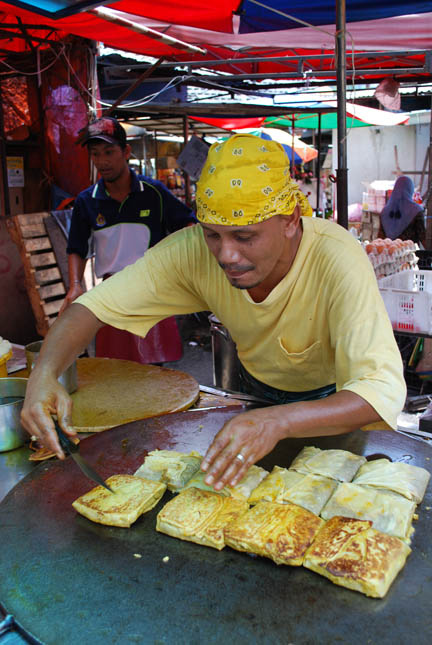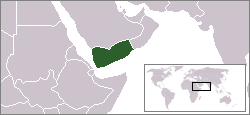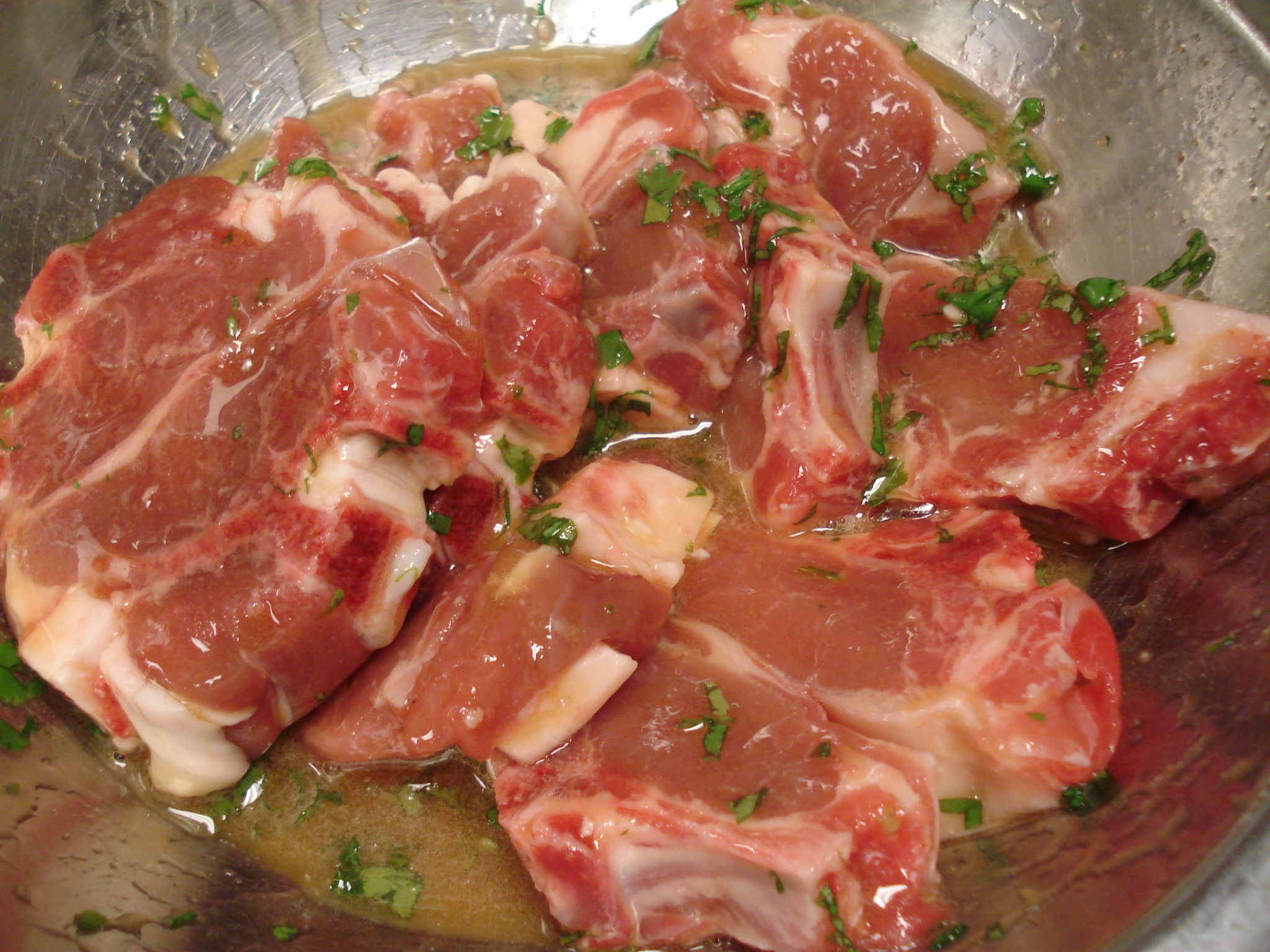|
Murtabak
Motabbaq ( ar, مطبق) is a stuffed pancake or pan-fried bread which is commonly found in the Arabian Peninsula and Southeast Asia, notably in Saudi Arabia, Yemen, Indonesia, Malaysia, Singapore, Brunei, Thailand and Bangladesh (Mughlai paratha). Depending on the location, the name and ingredients can significantly vary. The name ''mutabbaq'' in Arabic means "folded". It is a popular street food in Yemen, Indonesia, Malaysia, Thailand and Singapore. Murtabak is often described as spicy folded omelette pancake with bits of vegetables. The most common form of murtabak is made from pan fried crepes usually stuffed with beaten eggs, chopped leeks, chives, or green onion ( scallions) and minced meat, which is then folded and cut to squares. In Indonesia, the murtabak is one of the most popular street foods and is known as martabak. Vegetarian murtabaks and other forms of murtabaks with chicken and other stuffings exist and can be found in many Yemeni, Indian Muslim restauran ... [...More Info...] [...Related Items...] OR: [Wikipedia] [Google] [Baidu] |
Apam Balik
'' Apam balik'' () also known as ''Martabak Manis'' (),, ''terang bulan'' (), peanut pancake or ''mànjiānguǒ'' (), is a sweet dessert originating in Fujian cuisine which now consists of many varieties at specialist roadside stalls or restaurants throughout Brunei, Indonesia, Malaysia and Singapore. It can also be found in Hong Kong as () and Taiwan as (). ''Mànjiān'' (曼煎) is a homophone of '' Mǎnqīng'' (滿清), which ruled the final imperial dynasty in China, while ''guǒ'' (粿) means pancake. Origins The origins of Apam balik / 曼煎粿 attributes its invention to Zuo Zongtang, a military leader of the late Qing dynasty. In 1855, the army of the Taiping Heavenly Kingdom invaded the Fujian region and General Zuo was appointed to lead an army to crush the rebels. To provide the soldiers with food without interfering the life of local people, General Zuo decided to switch from the flatbread which was eaten together with spring onion and chilli sauce, to a panca ... [...More Info...] [...Related Items...] OR: [Wikipedia] [Google] [Baidu] |
Yemeni Cuisine
Yemeni cuisine is distinct from the wider Middle Eastern cuisines, but with a degree of regional variation. Although some foreign influences are evident in some regions of the country (with Ottoman influences showing in Sanaa, while Indian influence is evident in the southern areas around Aden and Mukalla), the Yemeni kitchen is based on similar foundations across the country. Customs The generous offering of food to guests is one of the customs in Yemeni culture, and a guest not accepting the offering is considered as an insult. Meals are typically consumed while sitting on the floor or ground. Unlike the tradition in most Arab countries, lunch is the main meal of the day in Yemen, not dinner. Food preparation In Yemen, many kitchens have a ''tandoor'' (also called ''tannur''), which is a round clay oven. Fruits and vegetables Tomatoes, onions, and potatoes are some of the staple fruits and vegetables in Yemen. Meat and dairy Chicken, goat, and lamb are the staple meats i ... [...More Info...] [...Related Items...] OR: [Wikipedia] [Google] [Baidu] |
Arabian Peninsula
The Arabian Peninsula, (; ar, شِبْهُ الْجَزِيرَةِ الْعَرَبِيَّة, , "Arabian Peninsula" or , , "Island of the Arabs") or Arabia, is a peninsula of Western Asia, situated northeast of Africa on the Arabian Plate. At , the Arabian Peninsula is the largest peninsula in the world. Geographically, the Arabian Peninsula includes Bahrain, Kuwait, Oman, Qatar, Saudi Arabia, the United Arab Emirates (UAE), and Yemen, as well as the southern portions of Iraq and Jordan. The largest of these is Saudi Arabia. In the classical era, the southern portions of modern-day Syria, Jordan, and the Sinai Peninsula were also considered parts of Arabia (see Arabia Petraea). The Arabian Peninsula formed as a result of the rifting of the Red Sea between 56 and 23 million years ago, and is bordered by the Red Sea to the west and southwest, the Persian Gulf and the Gulf of Oman to the northeast, the Levant and Mesopotamia to the north and the Arabian Sea and the Indian ... [...More Info...] [...Related Items...] OR: [Wikipedia] [Google] [Baidu] |
Street Food
Street food is ready-to-eat food or drinks sold by a hawker, or vendor, in a street or at other public places, such as markets or fairs. It is often sold from a portable food booth, food cart, or food truck and is meant for immediate consumption. Some street foods are regional, but many have spread beyond their regions of origin. Most street foods are classified as both finger food and fast food, and are typically cheaper than restaurant meals. The types of street food widely vary between regions and cultures in different countries around the world. According to a 2007 study from the Food and Agriculture Organization, 2.5 billion people eat street food every day. A majority of middle-income consumers rely on the quick access and cheap service of street food for daily nutrition and job opportunities, especially in developing countries. Today, governments and other organizations are increasingly concerned with both the socioeconomic importance of street food, and with its ass ... [...More Info...] [...Related Items...] OR: [Wikipedia] [Google] [Baidu] |
Malay Race
The concept of a Malay race was originally proposed by the German physician Johann Friedrich Blumenbach (1752–1840), and classified as a brown race. ''Malay'' is a loose term used in the late 19th century and early 20th century to describe the Austronesian peoples. Since Blumenbach, many anthropologists have rejected his theory of five races, citing the enormous complexity of classifying races. The concept of a "Malay race" differs with that of the ethnic Malays centered on Malaya and parts of the Malay Archipelago's islands of Sumatra and Borneo. History The linguistic connections between Madagascar, Polynesia and Southeast Asia were recognized early in the colonial era by European authors, particularly the remarkable similarities between Malagasy, Malay, and Polynesian numerals. The first formal publications on these relationships was in 1708 by the Dutch Orientalist Adriaan Reland, who recognized a "common language" from Madagascar to western Polynesia; althoug ... [...More Info...] [...Related Items...] OR: [Wikipedia] [Google] [Baidu] |
Curry
A curry is a dish with a sauce seasoned with spices, mainly associated with South Asian cuisine. In southern India, leaves from the curry tree may be included. There are many varieties of curry. The choice of spices for each dish in traditional cuisine depends on regional cultural tradition and personal preferences. Such dishes have names that refer to their ingredients, spicing, and cooking methods. Outside the Indian subcontinent, a curry is a dish from Southeast Asia which uses coconut milk or spice pastes, commonly eaten over rice. Curries may contain fish, meat, poultry, or shellfish, either alone or in combination with vegetables. Others are vegetarian. Dry curries are cooked using small amounts of liquid, which is allowed to evaporate, leaving the other ingredients coated with the spice mixture. Wet curries contain significant amounts of sauce or gravy based on broth, coconut cream or coconut milk, dairy cream or yogurt, or legume purée, sautéed crushed onio ... [...More Info...] [...Related Items...] OR: [Wikipedia] [Google] [Baidu] |
Egg (food)
Humans and human ancestors have scavenged and eaten animal eggs for millions of years. Humans in Southeast Asia had domesticated chickens and harvested their eggs for food by 1,500 BCE. The most widely consumed eggs are those of fowl, especially chickens. Eggs of other birds, including ostriches and other ratites, are eaten regularly but much less commonly than those of chickens. People may also eat the eggs of reptiles, amphibians, and fish. Fish eggs consumed as food are known as roe or caviar. Bird and reptile eggs consist of a protective eggshell, albumen ( egg white), and vitellus ( egg yolk), contained within various thin membranes. Egg yolks and whole eggs store significant amounts of protein and choline, and are widely used in cookery. Due to their protein content, the United States Department of Agriculture formerly categorized eggs as ''Meats'' within the Food Guide Pyramid (now MyPlate). Despite the nutritional value of eggs, there are some potential healt ... [...More Info...] [...Related Items...] OR: [Wikipedia] [Google] [Baidu] |
Goat Meat
Goat meat or goat's meat is the meat of the domestic goat ''(Capra aegagrus hircus)''. The common name for goat meat is simply "goat", while that from young goats can be called ''capretto'' (It.), ''cabrito'' (Sp. and Por.) or ''kid''. In South Asian and Caribbean cuisine, mutton commonly means goat meat.''Oxford English Dictionary'', 3rd edition, June 2003mutton_curry">''s.v.'',_definition_1b_In_South_Asia,_where_mutton_curry_is_popular,_"mutton"_is_used_for_both_goat_and_lamb_meat. The_culinary_name_"chevon",_a_blend_word.html" "title="culinary_name.html" ;"title="mutton curry">''s.v.'', definition 1b In South Asia, where mutton curry is popular, "mutton" is used for both goat and lamb meat. The culinary name">mutton curry">''s.v.'', definition 1b In South Asia, where mutton curry is popular, "mutton" is used for both goat and lamb meat. The culinary name "chevon", a blend word">blend of 'goat' and 'sheep', was coined in 1922 and selected by a trade association; it was ad ... [...More Info...] [...Related Items...] OR: [Wikipedia] [Google] [Baidu] |
Tamil Muslim
Tamil Muslims are Tamils who practise Islam. The community is 5.7 million in India, primarily in the state of Tamil Nadu where 70% of the Muslim community identified themselves as Tamils. The Tamil-speaking Muslims are descendants of marriages between early West Asian Muslims and Tamil women as well as local converts. The community is matrilineal, matriarchal and matrilocal. There is a substantial diaspora, particularly in Southeast Asia, which has seen their presence as early as the 13th century. In the late 20th century, the diaspora expanded to Western Europe, Persian Gulf and North America. A separate Tamil-speaking Muslim population also exists in Sri Lanka known as the Sri Lankan Moors, who do not identify as Tamils but are a mixture of Arab, Persian, South Indian and Malay ancestries of which the Dravidian element is predominant because of centuries of heavy Indian injection. Historically, both these Tamil speaking communities in India and Sri Lanka were known as the ... [...More Info...] [...Related Items...] OR: [Wikipedia] [Google] [Baidu] |
Ground Meat
Ground meat, called mince or minced meat outside North America, is meat finely chopped by a meat grinder or a chopping knife. A common type of ground meat is ground beef, but many other types of meats are prepared in a similar fashion, including pork, veal, lamb, goat meat, and poultry. Dishes Ground meat is used in a wide variety of dishes, by itself, or mixed with other ingredients. It may be formed into meatballs which are then fried, baked, steamed, or braised. They may be cooked on a skewer to produce dishes such as '' adana kebabı'' and ''ćevapi''. It may be formed into patties which are then grilled or fried ( hamburger), breaded and fried (''menchi-katsu'', Pozharsky cutlet), or braised ( Salisbury steak). It may be formed into meatloaves or pâtés and baked. It may also be used as a filling or stuffing for meat pies and ''böreks'', and also as stuffing. It may be made into meat sauce such as ragù, which in turn is used in dishes like pastitsio and mouss ... [...More Info...] [...Related Items...] OR: [Wikipedia] [Google] [Baidu] |
Scallion
Scallions (also known as spring onions or green onions) are vegetables derived from various species in the genus '' Allium''. Scallions generally have a milder taste than most onions and their close relatives include garlic, shallot, leek, chive, and Chinese onions. Although the bulbs of many ''Allium'' species are used as food, the defining characteristic of scallion species is that they lack a fully developed bulb. Instead the ''Allium'' species referred to as scallions make use of the hollow, tubular green leaves growing directly from the bulb. These leaves are used as a vegetable and can be eaten either raw or cooked. Often the leaves are chopped into other dishes and used as garnishes. Etymology and names The words ''scallion'' and ''shallot'' are related and can be traced back to the Ancient Greek () as described by the Greek writer Theophrastus. This name, in turn, is believed to originate from the name of the ancient Canaanite city of Ashkelon. Various other na ... [...More Info...] [...Related Items...] OR: [Wikipedia] [Google] [Baidu] |
Green Onion
Scallions (also known as spring onions or green onions) are vegetables derived from various species in the genus ''Allium''. Scallions generally have a milder taste than most onions and their close relatives include garlic, shallot, leek, chive, and Chinese onions. Although the bulbs of many ''Allium'' species are used as food, the defining characteristic of scallion species is that they lack a fully developed bulb. Instead the ''Allium'' species referred to as scallions make use of the hollow, tubular green leaves growing directly from the bulb. These leaves are used as a vegetable and can be eaten either raw or cooked. Often the leaves are chopped into other dishes and used as garnishes. Etymology and names The words ''scallion'' and ''shallot'' are related and can be traced back to the Ancient Greek () as described by the Greek writer Theophrastus. This name, in turn, is believed to originate from the name of the ancient Canaanite city of Ashkelon. Various other ... [...More Info...] [...Related Items...] OR: [Wikipedia] [Google] [Baidu] |



.png)






